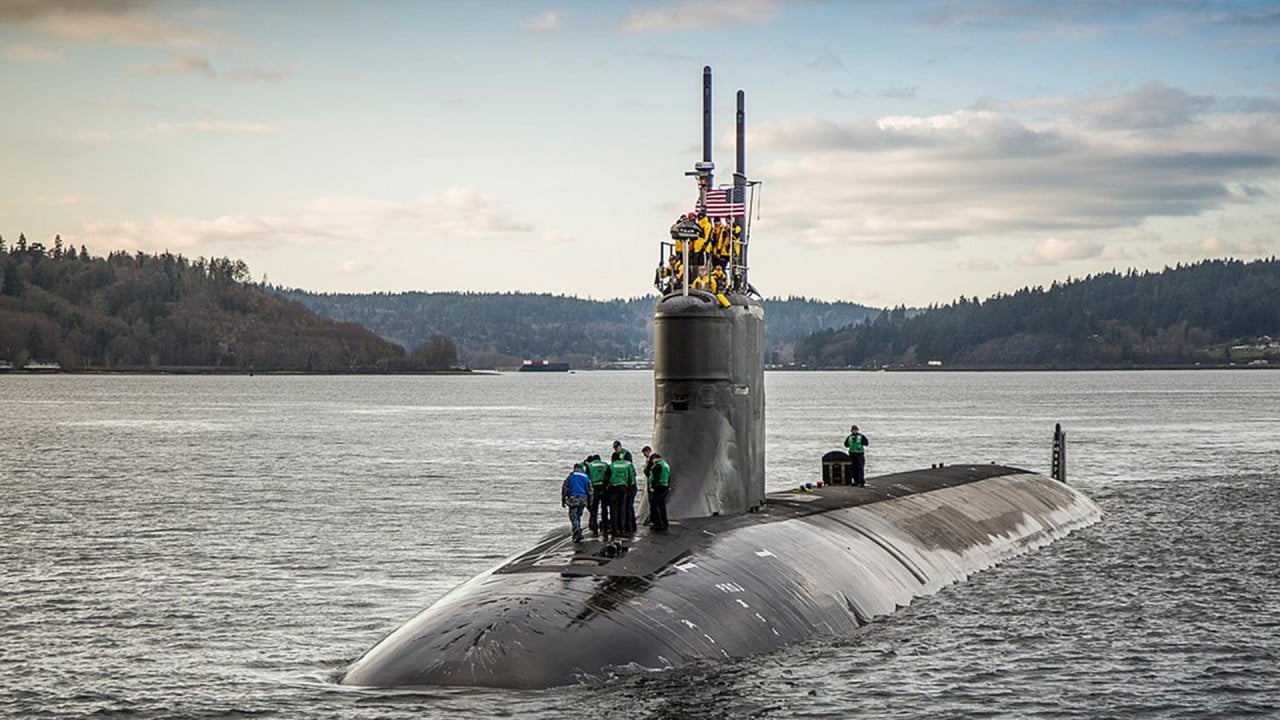The team, led by Zou Shengnan, used computer modelling to determine whether it was possible to detect the almost imperceptible bubbles produced by a nuclear-powered submarine cruising at high speed.
The result “provides a new solution for the detection and tracking of submarines”, according to the paper published on August 1 by the Chinese Journal of Ship Research.
Advertisement
The journal is run by the China Ship Scientific Research Centre, which has a long and respected history of cutting-edge developments in ship and ocean engineering.
The researchers calculated that the extremely low frequency (ELF) signal produced by a submarine’s bubbles could be stronger than the sensitivities of advanced magnetic anomaly detectors by three to six orders of magnitude.
“The magnitudes of the induced electric field and magnetic field are … well within the detection range of some top-notch sensors,” the paper said.
The bubbles are an inevitable consequence of the submarine’s cruising speed, which causes the water flowing around the hull to move faster as its kinetic energy increases and its potential energy – expressed as pressure – decreases.
Advertisement
This is because the total energy of a given system must remain constant. In the case of a fluid in motion, the sum of the kinetic energy – caused by the motion of the fluid – and the potential energy will not alter, but the balance of the two forces will shift.
Southeast Asia nations boosting submarine orders amid US-China rivalry
Southeast Asia nations boosting submarine orders amid US-China rivalry
When the pressure decreases sufficiently, small bubbles form on the surface of the hull as some of the water vaporises. This cavitation process is most likely to occur on areas with a sharp curvature or rough surface, which can create regions of low pressure.
Advertisement
As the water continues to flow around the hull, the bubbles grow bigger and move away from the surface, where the higher pressure – such as near the trailing edge of the hull – causes them to collapse violently.
This process causes turbulence and and can produce an electromagnetic signature, in a phenomenon known as the magnetohydrodynamic (MHD) effect. The faster the turbulence, the stronger the MHD voltage will be.
According to the computer modelling results, “significant induced electric field signals can be observed around the bow, stern, and rear of the hull”, the paper said.
The electromagnetic emissions produced by the cavitation bubbles fluctuate over time, generating a distinct signal in the extremely low frequency range, from 49.94 Hz to 34.19 Hz, according to the researchers.
Advertisement
Though faint, ELF signals can travel great distances, thanks to their ability to penetrate the water and reach the ionosphere, where they are reflected back to the Earth’s surface.
This quality is already exploited for submarine communication. China, for instance, has built the world’s largest antenna to transmit ELF signals to its submarine fleet hidden in deep waters.
According to Zou and her team, their findings can “also provide a reference for the selection of electromagnetic communication frequencies for high-speed submarines”.
Chinese team says new stealth tech for submarines can ‘cancel out’ US sonar
Chinese team says new stealth tech for submarines can ‘cancel out’ US sonar
Traditional electromagnetic detection technologies locate and track the disturbance in the Earth’s magnetic field created by the movement through the water of a submarine, which is typically made of a ferromagnetic material like steel.
Advertisement
By analysing the strength and direction of the electromagnetic field, it is possible to determine the location and movement of the submarine. But traditional detection technologies are increasingly limited by the countermeasures deployed by ship designers.
These include the use of low-magnetic or non-metallic materials in the design of the submarine shell, as well as other measures to continuously reduce the electromagnetic characteristics of the vessels.
China holds anti-submarine drills as regional rivals boost underwater forces
China holds anti-submarine drills as regional rivals boost underwater forces
There is an urgent need for research into a new type of signal source, according to Zuo and her team, but they cautioned that there are several practical challenges to detecting the electromagnetic signals produced by submarine cavitation.
These include the disappearance of the signal when the submarine slows down or stops, as well as interference from other sources – such as naturally occurring electromagnetic noise or human-made signals.
The flow of water around a submarine can also be highly turbulent and unsteady, which can affect the formation and evolution of cavitation bubbles and the resulting electromagnetic signals.
The researchers said further research is need to better understand the complex physics behind the flow-electromagnetic coupling, to develop more accurate and reliable models for predicting these induced electromagnetic submarine signatures.
Advertisement



